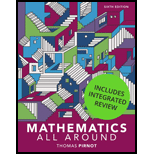
Mathematics All Around - With MyMathLab and Workbook
6th Edition
ISBN: 9780134800172
Author: Pirnot
Publisher: PEARSON
expand_more
expand_more
format_list_bulleted
Concept explainers
Textbook Question
Chapter 11.2, Problem 19E
Presidential election. One of the several controversies of the 2000 presidential election was that Al Gore had more popular ‘dotes than George W. Bush, yet lost the election. A summary of the popular vote is given in the table below.
| Candidate | Popular vote |
| George W. Bush | 50,356,002 |
| Al Gore | 50,399,897 |
| Ralph Nader | 2,882,955 |
| Pat Buchanan | 448,895 |
| Harry Browne | 384,431 |
| Howard Phillips | 98,020 |
| John Hagelin | 83,714 |
| Other | 51,186 |
| Total | 105,405,100 |
Assume that the election was held using plurality with elimination method. further assume:
- All of Hagelin’s, Phillips’ and Buchanan’s voters preferred Bush as their second choice.
- All Browne’s voters preferred Nader second and Gore third.
- The other’ voter had bush and Gore split equally as their second choices.
- 70 percent of those whose first choice was Nader preferred Gore second and 30 percent preferred Bush second.
- What are the vote totals after all are eliminated except Bush, Gore and Nader?
- What are the final vote totals?
- Who wins and with what percent of the popular vote?
Expert Solution & Answer
Want to see the full answer?
Check out a sample textbook solution
Chapter 11 Solutions
Mathematics All Around - With MyMathLab and Workbook
Ch. 11.1 - Four candidates running for a vacant seat on the...Ch. 11.1 - Five candidates running for mayor receive votes as...Ch. 11.1 - The university administration has asked a group of...Ch. 11.1 - The university administration has asked a group of...Ch. 11.1 - The university administration has asked a group of...Ch. 11.1 - The university administration has asked a group of...Ch. 11.1 - The drama society members are voting for the type...Ch. 11.1 - The drama society members are voting for the type...Ch. 11.1 - The drama society members are voting for the type...Ch. 11.1 - The drama society members are voting for the type...
Ch. 11.1 - Before a conference on Trends in the next Decade,...Ch. 11.1 - Before a conference on Trends in the next Decade,...Ch. 11.1 - Prob. 13ECh. 11.1 - Prob. 14ECh. 11.1 - A small employee-owned Internet company is voting...Ch. 11.1 - Prob. 16ECh. 11.1 - Prob. 17ECh. 11.1 - A small employee-owned Internet company is voting...Ch. 11.1 - Prob. 19ECh. 11.1 - Prob. 20ECh. 11.1 - Prob. 21ECh. 11.1 - Prob. 22ECh. 11.1 - In Exercises 23-26, refer to the preference table...Ch. 11.1 - Prob. 24ECh. 11.1 - In Exercises 23-26, refer to the preference table...Ch. 11.1 - Prob. 26ECh. 11.1 - In Exercises 27-30, refer to the preference table...Ch. 11.1 - In Exercises 27-30, refer to the preference table...Ch. 11.1 - In Exercises 27-30, refer to the preference table...Ch. 11.1 - Prob. 30ECh. 11.1 - Prob. 31ECh. 11.1 - Prob. 32ECh. 11.1 - Prob. 33ECh. 11.1 - Prob. 34ECh. 11.1 - Prob. 35ECh. 11.1 - Prob. 36ECh. 11.1 - Prob. 37ECh. 11.1 - Prob. 38ECh. 11.1 - Prob. 39ECh. 11.1 - Prob. 40ECh. 11.1 - Prob. 41ECh. 11.1 - Prob. 42ECh. 11.1 - Prob. 43ECh. 11.1 - Math in Your Life: Between the Numbers Instant...Ch. 11.1 - In approval voting, a person can vote for more...Ch. 11.1 - Prob. 46ECh. 11.1 - Prob. 47ECh. 11.1 - Prob. 48ECh. 11.1 - Prob. 49ECh. 11.1 - Prob. 50ECh. 11.1 - Prob. 51ECh. 11.1 - Prob. 52ECh. 11.2 - Some of these exercises have no fixed solution...Ch. 11.2 - Some of these exercises have no fixed solution...Ch. 11.2 - Determining the legal drinking age. A state...Ch. 11.2 - Voting for the president of a club. A chapter of...Ch. 11.2 - Choosing a location for a research facility. Teach...Ch. 11.2 - Locating a new factory. The Land Mover Tractor...Ch. 11.2 - Reducing a budget. Due to a decrease in state...Ch. 11.2 - Voting on an award for best restaurant. A group of...Ch. 11.2 - Use the following preference table for Exercises 9...Ch. 11.2 - Use the following preference table for Exercises 9...Ch. 11.2 - Complete the preference table so that the Borda...Ch. 11.2 - Complete the preference table so that A is the...Ch. 11.2 - Prob. 13ECh. 11.2 - Make a preference table similar to the one given...Ch. 11.2 - Complete the preference table so that the...Ch. 11.2 - Does the plurality method satisfy the majority...Ch. 11.2 - Does the plurality-with-elimination method satisfy...Ch. 11.2 - Prob. 18ECh. 11.2 - Presidential election. One of the several...Ch. 11.2 - Prob. 20ECh. 11.2 - Prob. 21ECh. 11.2 - A run off election. Repeat Exercise 21 using this...Ch. 11.2 - Prob. 23ECh. 11.2 - Prob. 24ECh. 11.2 - Prob. 25ECh. 11.2 - Prob. 26ECh. 11.2 - Prob. 27ECh. 11.2 - Voters are choosing among five options. Make a...Ch. 11.2 - Make a preference table, similar to the one given...Ch. 11.2 - Prob. 30ECh. 11.2 - Prob. 31ECh. 11.2 - Prob. 32ECh. 11.2 - Prob. 33ECh. 11.2 - Prob. 34ECh. 11.2 - One of the voting methods we have been discussing...Ch. 11.3 - Prob. 1ECh. 11.3 - Prob. 2ECh. 11.3 - In Exercises 1-12, the weight represent voters A,...Ch. 11.3 - Prob. 4ECh. 11.3 - Prob. 5ECh. 11.3 - Prob. 6ECh. 11.3 - In Exercises 1-12, the weight represent voters A,...Ch. 11.3 - In Exercises 1-12, the weight represent voters A,...Ch. 11.3 - In Exercises 1-12, the weight represent voters A,...Ch. 11.3 - Prob. 10ECh. 11.3 - Prob. 11ECh. 11.3 - Prob. 12ECh. 11.3 - In Exercises 13-16, write out all winning...Ch. 11.3 - Prob. 14ECh. 11.3 - In Exercises 13-16, write out all winning...Ch. 11.3 - Prob. 16ECh. 11.3 - Prob. 17ECh. 11.3 - Prob. 18ECh. 11.3 - Prob. 19ECh. 11.3 - Prob. 20ECh. 11.3 - Prob. 21ECh. 11.3 - Prob. 22ECh. 11.3 - Prob. 23ECh. 11.3 - Prob. 24ECh. 11.3 - Prob. 25ECh. 11.3 - Prob. 26ECh. 11.3 - Prob. 27ECh. 11.3 - Prob. 28ECh. 11.3 - Prob. 29ECh. 11.3 - Prob. 30ECh. 11.3 - Prob. 31ECh. 11.3 - Prob. 32ECh. 11.3 - In Exercises 29-34, determine the Banzhaf power...Ch. 11.3 - Prob. 34ECh. 11.3 - The system [3:1,1,1,1,1] is an example of a one...Ch. 11.3 - Prob. 36ECh. 11.3 - Consider the system [14:15,2,3,3,5] in which A is...Ch. 11.3 - Prob. 38ECh. 11.3 - Calculating power in the electoral college. After...Ch. 11.3 - Prob. 40ECh. 11.3 - Prob. 41ECh. 11.3 - Prob. 42ECh. 11.3 - Prob. 43ECh. 11.3 - In Example 5, we analyzed the voting power of the...Ch. 11.3 - In Example 5, we analyzed the voting power of the...Ch. 11.3 - Prob. 46ECh. 11.3 - Prob. 47ECh. 11.3 - Prob. 48ECh. 11.3 - Prob. 49ECh. 11.3 - Prob. 50ECh. 11.3 - A dummy in a weighted voting system is a voter...Ch. 11.3 - Prob. 52ECh. 11.3 - Prob. 53ECh. 11.3 - Prob. 54ECh. 11.3 - In Exercises 55 and 56, devise a voting system...Ch. 11.3 - Prob. 56ECh. 11.4 - In Exercises 1 4, use tree diagrams to find all...Ch. 11.4 - Prob. 2ECh. 11.4 - In Exercises 1 4, use tree diagrams to find all...Ch. 11.4 - Prob. 4ECh. 11.4 - Prob. 5ECh. 11.4 - Prob. 6ECh. 11.4 - Prob. 7ECh. 11.4 - Prob. 8ECh. 11.4 - Prob. 9ECh. 11.4 - Prob. 10ECh. 11.4 - Prob. 11ECh. 11.4 - Prob. 12ECh. 11.4 - In Exercises 1116, determine the Shapley-Shubik...Ch. 11.4 - Prob. 14ECh. 11.4 - Prob. 15ECh. 11.4 - Prob. 16ECh. 11.4 - The system [3:1,1,1,1,1] is an example of a one...Ch. 11.4 - Measuring power on a jury. We can consider a...Ch. 11.4 - Prob. 19ECh. 11.4 - Prob. 20ECh. 11.4 - Prob. 21ECh. 11.4 - Measuring power on a theater guild. The Theater...Ch. 11.4 - Measuring power on a state committee. The college...Ch. 11.4 - Prob. 24ECh. 11.4 - Prob. 25ECh. 11.4 - A new social media company, Chirp, has an...Ch. 11.4 - Prob. 27ECh. 11.4 - Measuring power among states. Repeat Exercise 27...Ch. 11.4 - Explain the difference between the Banzhaf index...Ch. 11.4 - Prob. 30ECh. 11.4 - Prob. 31ECh. 11.4 - Prob. 32ECh. 11.4 - Prob. 33ECh. 11.4 - Prob. 34ECh. 11.CR - Prob. 1CRCh. 11.CR - Prob. 2CRCh. 11.CR - Prob. 3CRCh. 11.CR - Prob. 4CRCh. 11.CR - Prob. 5CRCh. 11.CR - Prob. 6CRCh. 11.CR - Prob. 7CRCh. 11.CR - Prob. 8CRCh. 11.CR - Prob. 9CRCh. 11.CR - Prob. 10CRCh. 11.CR - Prob. 11CRCh. 11.CR - Prob. 12CRCh. 11.CR - Prob. 13CRCh. 11.CR - Prob. 14CRCh. 11.CR - Prob. 15CRCh. 11.CR - Prob. 16CRCh. 11.CR - Prob. 17CRCh. 11.CR - Prob. 18CRCh. 11.CT - Prob. 1CTCh. 11.CT - Prob. 2CTCh. 11.CT - Prob. 3CTCh. 11.CT - Prob. 4CTCh. 11.CT - Prob. 5CTCh. 11.CT - Prob. 6CTCh. 11.CT - Prob. 7CTCh. 11.CT - Prob. 8CTCh. 11.CT - Prob. 9CTCh. 11.CT - Determine the Banzhaf power index for each voter...Ch. 11.CT - Prob. 11CTCh. 11.CT - Prob. 12CTCh. 11.CT - Prob. 13CTCh. 11.CT - Prob. 14CTCh. 11.CT - Prob. 15CTCh. 11.CT - Prob. 16CT
Knowledge Booster
Learn more about
Need a deep-dive on the concept behind this application? Look no further. Learn more about this topic, subject and related others by exploring similar questions and additional content below.Recommended textbooks for you
 Discrete Mathematics and Its Applications ( 8th I...MathISBN:9781259676512Author:Kenneth H RosenPublisher:McGraw-Hill Education
Discrete Mathematics and Its Applications ( 8th I...MathISBN:9781259676512Author:Kenneth H RosenPublisher:McGraw-Hill Education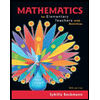 Mathematics for Elementary Teachers with Activiti...MathISBN:9780134392790Author:Beckmann, SybillaPublisher:PEARSON
Mathematics for Elementary Teachers with Activiti...MathISBN:9780134392790Author:Beckmann, SybillaPublisher:PEARSON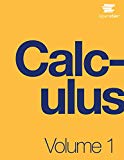
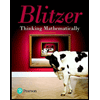 Thinking Mathematically (7th Edition)MathISBN:9780134683713Author:Robert F. BlitzerPublisher:PEARSON
Thinking Mathematically (7th Edition)MathISBN:9780134683713Author:Robert F. BlitzerPublisher:PEARSON Discrete Mathematics With ApplicationsMathISBN:9781337694193Author:EPP, Susanna S.Publisher:Cengage Learning,
Discrete Mathematics With ApplicationsMathISBN:9781337694193Author:EPP, Susanna S.Publisher:Cengage Learning,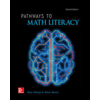 Pathways To Math Literacy (looseleaf)MathISBN:9781259985607Author:David Sobecki Professor, Brian A. MercerPublisher:McGraw-Hill Education
Pathways To Math Literacy (looseleaf)MathISBN:9781259985607Author:David Sobecki Professor, Brian A. MercerPublisher:McGraw-Hill Education

Discrete Mathematics and Its Applications ( 8th I...
Math
ISBN:9781259676512
Author:Kenneth H Rosen
Publisher:McGraw-Hill Education

Mathematics for Elementary Teachers with Activiti...
Math
ISBN:9780134392790
Author:Beckmann, Sybilla
Publisher:PEARSON


Thinking Mathematically (7th Edition)
Math
ISBN:9780134683713
Author:Robert F. Blitzer
Publisher:PEARSON

Discrete Mathematics With Applications
Math
ISBN:9781337694193
Author:EPP, Susanna S.
Publisher:Cengage Learning,

Pathways To Math Literacy (looseleaf)
Math
ISBN:9781259985607
Author:David Sobecki Professor, Brian A. Mercer
Publisher:McGraw-Hill Education
Statistics 4.1 Point Estimators; Author: Dr. Jack L. Jackson II;https://www.youtube.com/watch?v=2MrI0J8XCEE;License: Standard YouTube License, CC-BY
Statistics 101: Point Estimators; Author: Brandon Foltz;https://www.youtube.com/watch?v=4v41z3HwLaM;License: Standard YouTube License, CC-BY
Central limit theorem; Author: 365 Data Science;https://www.youtube.com/watch?v=b5xQmk9veZ4;License: Standard YouTube License, CC-BY
Point Estimate Definition & Example; Author: Prof. Essa;https://www.youtube.com/watch?v=OTVwtvQmSn0;License: Standard Youtube License
Point Estimation; Author: Vamsidhar Ambatipudi;https://www.youtube.com/watch?v=flqhlM2bZWc;License: Standard Youtube License